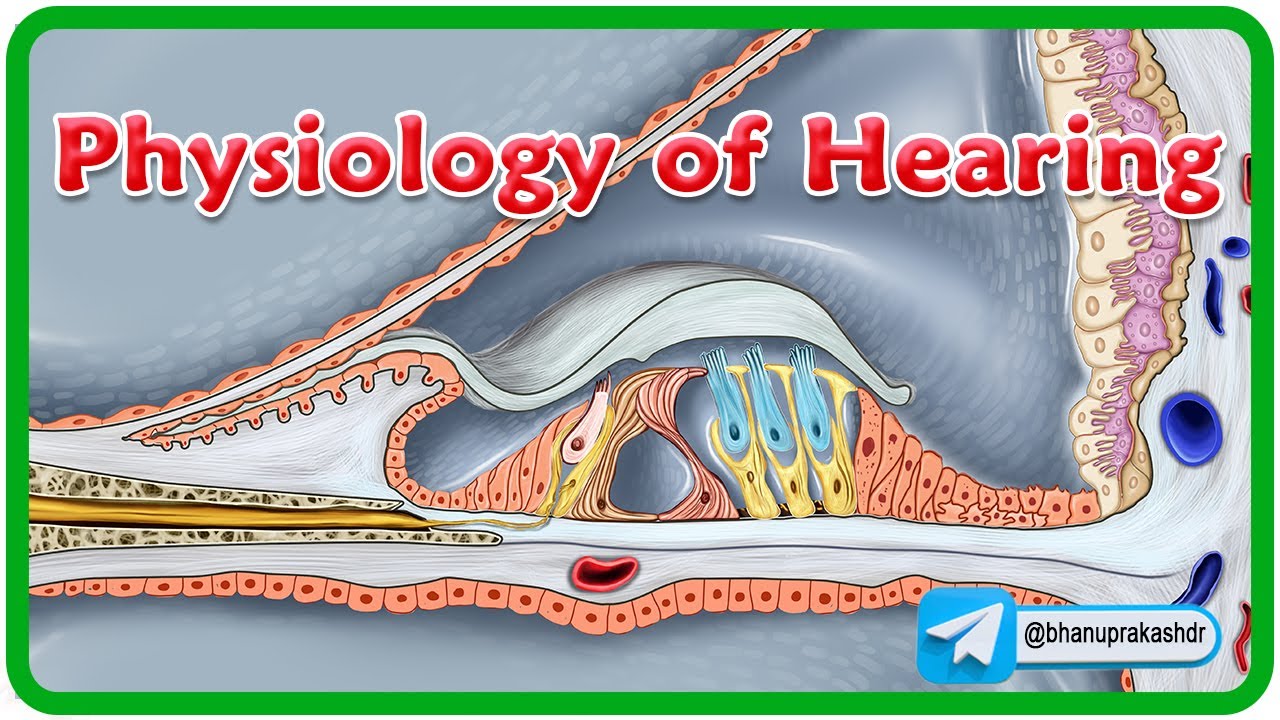The science of hearing - Douglas L. Oliver
Summary
TLDRThis script delves into the intricacies of human hearing, detailing how sound waves are transformed into neural signals by the ear and processed by the brain. It explains the role of the eardrum, middle ear bones, and the cochlea in converting sound vibrations into fluid waves, which are then detected by hair cells. The script also touches on how the brain uses the timing and intensity of sounds reaching each ear to pinpoint their source. It concludes by highlighting the sophistication of our auditory system and briefly mentions common hearing issues.
Takeaways
- 👂 The auditory system consists of the ear and the brain, which work together to convert sound energy into neural signals that the brain can interpret.
- 🌊 Sound waves from the environment are initially vibrations that travel through air, liquids, or solids.
- 🔧 The eardrum and the tiny bones of the middle ear are responsible for converting sound waves into fluid waves within the cochlea.
- 🎶 The cochlea contains a basilar membrane with hair cells that have stereocilia, which move in response to fluid vibrations and trigger signals sent to the brain.
- 📊 The basilar membrane is engineered to respond differently to various sound frequencies, with high frequencies affecting the stiffer base and low frequencies the more flexible apex.
- 🕊 The brain plays a crucial role in identifying the location of a sound by comparing the timing and intensity of sounds received by each ear.
- 👥 Sounds from different directions reach each ear at slightly different times and with varying intensity, providing clues about the sound's origin.
- 🧠 The brainstem analyzes the time and intensity differences between the ears and sends this information to the auditory cortex for sound identification and localization.
- 🏥 Hearing loss is a common chronic condition, often caused by exposure to loud noises, certain drugs, or diseases that damage the ear's delicate mechanisms.
- 🔉 Conditions like osteosclerosis and tinnitus can disrupt the normal functioning of the ear, leading to hearing difficulties or phantom sounds.
Q & A
What are the two main parts of the auditory system?
-The two main parts of the auditory system are the ear and the brain.
How does the ear convert sound energy into neural signals?
-The ear converts sound energy into neural signals through the eardrum and the tiny bones of the middle ear, which transform the vibrations of the eardrum into pressure waves in the fluid of the cochlea.
What is the role of the cochlea in the hearing process?
-The cochlea is filled with fluid and contains the basilar membrane lined with hair cells. It converts sound vibrations into fluid waves that stimulate the hair cells, which then send signals to the brain.
How do the vibrations of the basilar membrane relate to the frequency of sound?
-The basilar membrane is designed to vibrate at different locations depending on the frequency of the sound. High-frequency sounds cause vibrations at the stiffer, base end, while low-frequency sounds vibrate the more flexible, apical end.
What are stereocilia and what is their function in hearing?
-Stereocilia are specialized components of hair cells in the cochlea that move with the vibrations of the cochlear fluid and basilar membrane. This movement triggers signals that are sent to the brain as specific sounds.
How does the brain identify the location of a sound source?
-The brain identifies the location of a sound source by comparing the sounds entering both ears, analyzing the time and intensity differences, and using this information to locate the source in space.
What happens when a sound reaches the near ear before the far ear?
-When a sound reaches the near ear before the far ear, it indicates that the sound is coming from one side. The brain uses this timing difference to help pinpoint the location of the sound source.
Why are high-frequency sounds more intense to the near ear?
-High-frequency sounds are more intense to the near ear because they are blocked from the far ear by the head, causing a difference in intensity that the brain uses to locate the sound source.
What is the auditory cortex and what does it do?
-The auditory cortex is a part of the brain that receives and processes information from the brainstem about the patterns of activity and location of sounds, allowing us to identify and locate sounds in our environment.
How can exposure to loud noises affect hearing?
-Exposure to loud noises can kill hair cells in the cochlea, preventing signals from traveling to the brain, which can lead to hearing loss.
What is tinnitus and how does it relate to the auditory system?
-Tinnitus is a condition where the brain perceives sound when there is none, often due to damage to the auditory system. It can be caused by various factors, including exposure to loud noises, ear injuries, or certain medications.
Outlines

Dieser Bereich ist nur für Premium-Benutzer verfügbar. Bitte führen Sie ein Upgrade durch, um auf diesen Abschnitt zuzugreifen.
Upgrade durchführenMindmap

Dieser Bereich ist nur für Premium-Benutzer verfügbar. Bitte führen Sie ein Upgrade durch, um auf diesen Abschnitt zuzugreifen.
Upgrade durchführenKeywords

Dieser Bereich ist nur für Premium-Benutzer verfügbar. Bitte führen Sie ein Upgrade durch, um auf diesen Abschnitt zuzugreifen.
Upgrade durchführenHighlights

Dieser Bereich ist nur für Premium-Benutzer verfügbar. Bitte führen Sie ein Upgrade durch, um auf diesen Abschnitt zuzugreifen.
Upgrade durchführenTranscripts

Dieser Bereich ist nur für Premium-Benutzer verfügbar. Bitte führen Sie ein Upgrade durch, um auf diesen Abschnitt zuzugreifen.
Upgrade durchführen5.0 / 5 (0 votes)






